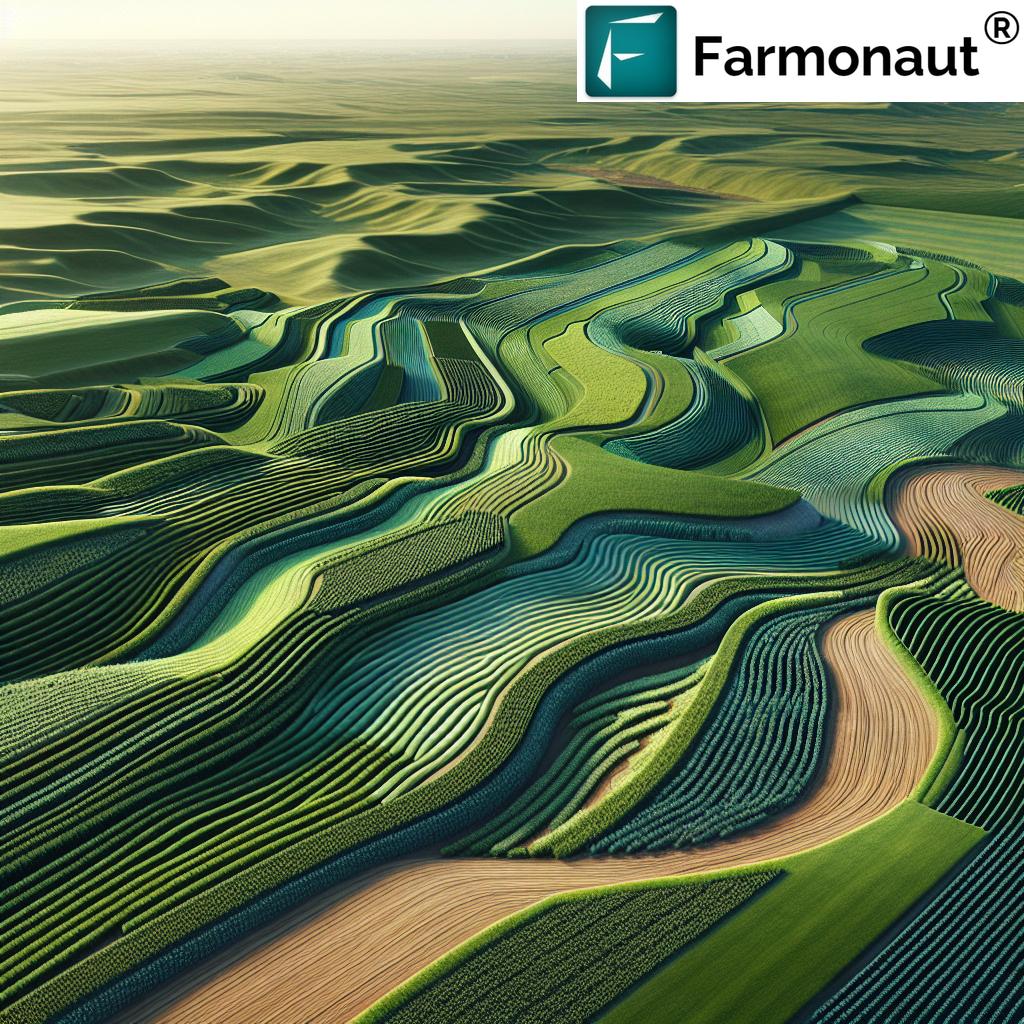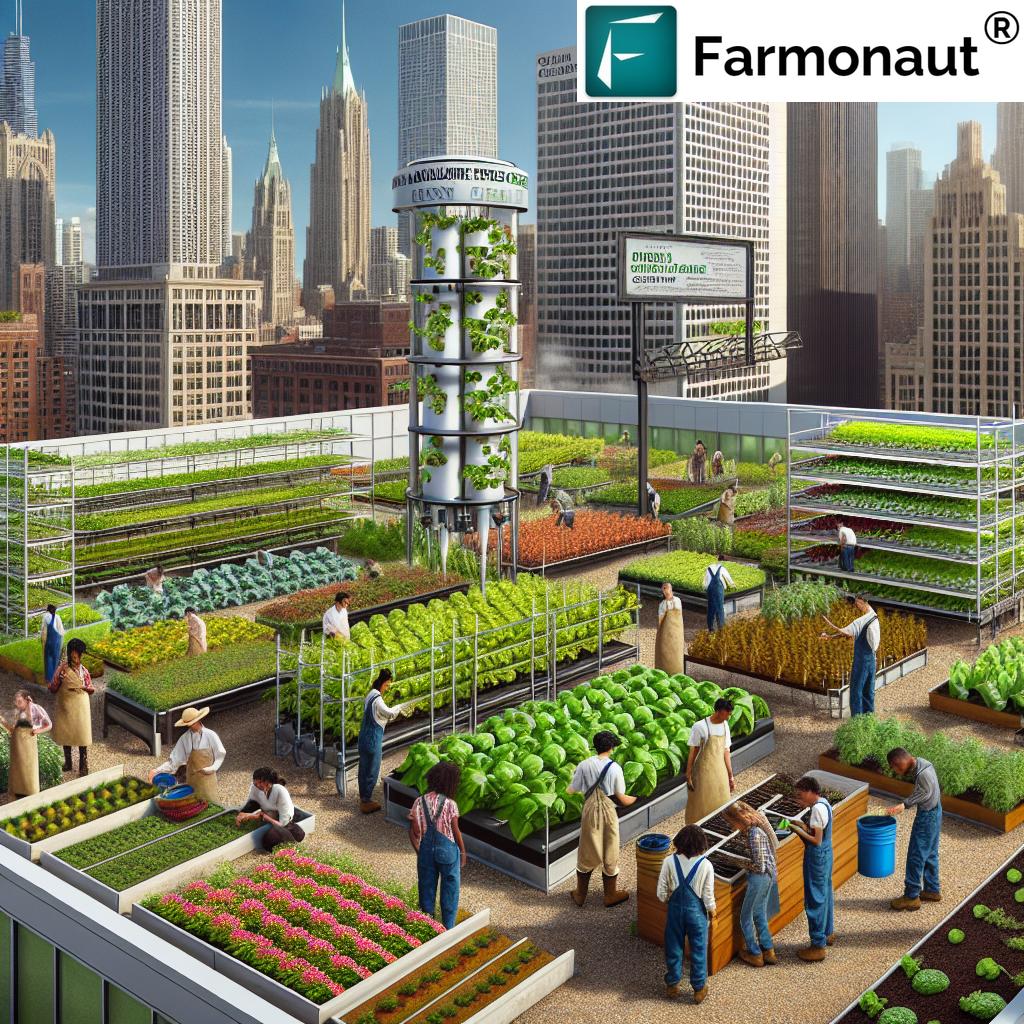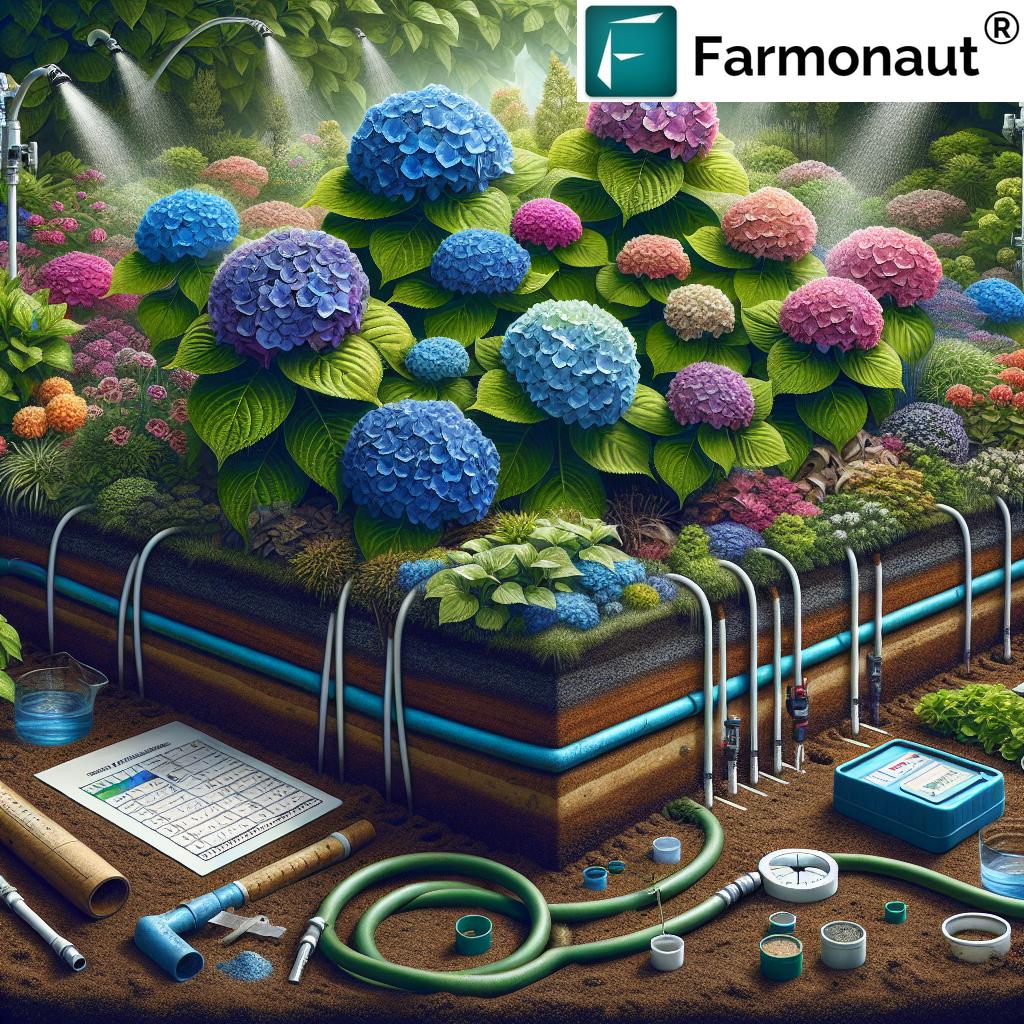Contour Farming: 7 Shocking Soil & Water Benefits!
“Contour farming can reduce soil erosion by up to 50% compared to traditional up-and-down slope methods.”
Contour Farming: Sustainable Land Management for the Future
As stewards of the environment and guardians of food security, we continuously seek agricultural practices that can optimize crop yields, protect our soils, and conserve water. One such powerful method is contour farming—also known as contour plowing. This technique involves tilling and planting crops along the contour lines—elevational curves—of a field’s slope, rather than up and down.
By aligning all operations, from plowing to sowing, with the land’s natural elevation, we create natural barriers. These obstacles help reduce soil erosion and conserve rainwater by slowing down surface runoff. The result is healthier soils, improved water retention, and stronger crop growth—making contour farming a cornerstone of modern sustainable agriculture practices.
Below, we explore its fascinating history, shockingly impactful benefits, key implementation steps, comparisons with conventional farming, integration with other conservation practices, and how Farmonaut’s satellite and AI technologies can empower farmers worldwide to adopt and monitor this technique efficiently.
Historical Background: Contour Farming Through the Ages
The Origins and Evolution of Contour Plowing
Contour farming is not just a modern agricultural practice—it’s a time-honored method with roots stretching thousands of years back. Our journey begins with the Phoenicians, who ingeniously developed and popularized the first known forms of contour plowing across the Mediterranean. Unlike their Roman counterparts (who favored straight furrows), the Phoenicians realized that cultivating along contour lines was key to soil conservation and water management—essential for agriculture in the rugged, sloped landscapes bordering the Mediterranean Sea.
As agricultural civilizations advanced, the emphasis on soil health waxed and waned. Straight furrow cultivation dominated during the Roman era, sacrificing long-term soil structure for short-term ease of operations. However, contour farming resurfaced as a crucial soil conservation method in the 20th century, particularly in the United States.
During the infamous Dust Bowl of the 1930s—a period marked by catastrophic soil erosion and agricultural collapse—the U.S. government, led by the Soil Conservation Service, promoted widespread adoption of contour farming and related practices. This shift restored degraded lands, cut erosion rates, and set an enduring standard for environmentally responsible farming.
Implementation Techniques: Planning, Mapping, and Maintaining Your Contour Farming System
Proper implementation of contour farming maximizes its soil and water conservation benefits. The success of this practice depends on careful mapping, aligning field operations to contour lines, and maintaining structures like ridges, swales, and terraces.
1. Mapping Contour Lines: The Essential First Step
- Map and Identify Lines of Equal Elevation: Begin by using tools (from basic leveling devices to GPS and satellite-based solutions) to draw lines of equal elevation (contours) across the field.
-
Spacing Recommendations:
- For gentle slopes (2-5% gradient): Space contour lines 10–20 meters apart.
- For steeper slopes: Reduce spacing to as little as 5 meters for maximum control.
- Modern Mapping Tools: Digital apps and satellite-based platforms, such as those by Farmonaut, allow for precise, large-scale mapping of contours and slope gradients via AI and remote sensing. This enhances the accuracy and accessibility of the contour mapping process.
2. Aligning Field Operations: Plowing, Sowing, and Irrigation
- Plowing and Planting: All tilling, planting, sowing, and subsequent field operations must follow the mapped contour lines, adjusting machine tracks, furrow directions, and irrigation channels accordingly.
- Water Flow Management: By orienting operations along contours, we effectively reduce water runoff in farming and slow down excess flow, giving water more time to infiltrate the soil.
- Research-Backed Results: Aligning operations to contour lines can reduce runoff by up to 30% in areas with moderate rainfall
3. Constructing Contour Ridges, Swales, and Barriers
- Contour Ridges and Swales: These are physical embankments (ridges) and small depressions (swales) constructed along the contour lines. Their purpose is to capture and hold rainwater and organic matter, increasing water infiltration and reducing soil loss.
- Adaptive Adjustments: Placement and sizing of these structures are adjusted according to each field’s slope, rainfall patterns, and soil type.
4. Maintenance and Upkeep of Contour Structures
- Regular inspections are crucial—rainstorms and runoff can breach ridges or erode swales.
- Ongoing maintenance ensures long-term efficacy of all soil conservation methods.
The 7 Shocking Soil & Water Benefits of Contour Farming
Adopting contour farming delivers an impressive suite of advantages for both the environment and agricultural productivity. Let’s dive into the seven most dazzling soil and water benefits of this powerful, sustainable agriculture practice:
-
Dramatic Soil Erosion Reduction
By creating natural barriers that force water to move slowly along the contour lines, this technique can cut soil erosion rates by up to 50%. Instead of water rushing downhill and carrying away valuable topsoil, the landscape itself acts as a defense, maintaining fertile layers for decades. This is especially important for areas on steep slopes.
-
Water Conservation in Agriculture
Water runoff is a primary driver of resource loss and soil degradation. Contour farming slows runoff and enhances infiltration, allowing rainwater to soak into the soil profile rather than being lost to surface flow. Studies show up to 30% greater water retention in contour-farmed fields.
-
Improved Soil Structure and Fertility
Because runoff is slowed and erosion is controlled, soil structure remains intact. Fewer nutrients and less organic matter are washed away, meaning healthier root zones, more active soil biology, and better moisture holding capacity—essential for crop growth and resilience in dry seasons.
-
Increased Accumulation of Organic Matter
With plant residues and organic materials remaining on the field, organic matter content rises steadily. Enhanced organic carbon levels not only feed our crops, but foster a richer microbial ecosystem—crucial for nutrient cycling and productivity.
-
Reduced Agricultural Chemical Runoff
Runoff doesn’t just take away soil—it carries away fertilizers, pesticides, and herbicides. By keeping these chemicals in place, contour plowing reduces input waste and significantly protects nearby water bodies from pollution, supporting cleaner rivers and lakes.
-
Enhanced Crop Yields and Productivity
Research and field trials repeatedly show that, all else being equal, contour-farmed fields deliver higher and more resilient yields. Improved water supply, better root development, and reduced soil loss combine to support healthy, vigorous crops even under climatic stress.
-
Long-Term Environmental Sustainability
This sustainable agriculture practice improves carbon sequestration, reduces on-farm emissions (especially when paired with Farmonaut’s Carbon Footprinting tools), and fosters biodiversity both above and below ground. Contour farming can even help us achieve compliance with modern environmental and regenerative agriculture standards.
Each of these benefits works together, resulting in soils that are healthier, crops that are hardier, and a farming system more robust against climate extremes.
Comparative Benefits Table: Conventional vs. Contour Farming
| Benefit | Conventional Farming | Contour Farming |
|---|---|---|
| Soil Erosion Reduction | High erosion, rapid topsoil loss on slopes | Up to 70% less soil loss; maintains long-term soil health |
| Water Conservation | Rapid runoff, low infiltration; frequent drought risk | 30% higher water retention; improved drought resistance |
| Crop Yield Improvement | Unstable, yields drop in heavy rain years | Higher, more consistent yields due to reduced erosion/runoff |
| Soil Fertility | Declines over time, nutrient losses common | Preserved nutrient levels, stable organic content |
| Runoff Control | Frequent flooding, polluted runoff into waterways | Vastly reduced surface runoff and water pollution |
| Pest Reduction | Monoculture, increased risk of pest pressure | Improved biological diversity, lower pest burden |
| Sustainability Impact | Damages ecosystem, low carbon sequestration | Boosts sustainability, soil ecosystem health, carbon intake |
Integration: Soil Conservation Methods & Sustainable Practices
Contour farming is most powerful when used synergistically with other soil conservation methods and sustainable agriculture practices:
- Strip Cropping: Alternating strips of ground cover (like legumes or grasses) and row crops along contour lines. This combines the barrier effect of contours with diverse root systems for even greater erosion control and soil fertility.
-
Terracing: Especially beneficial in very steep areas, terracing transforms slopes into a series of level steps supported by walls or ridges. This technique, in tandem with contour farming, further slows runoff and maximizes water retention.
- Pairing terraces with real-time monitoring—like Farmonaut’s large-scale management platform (learn more)—enables quick detection and repair of erosion hot spots.
- Water Diversion Ditches: In regions susceptible to heavy rainfall events, diversion ditches intercept and re-route excess water away from field boundaries and sensitive slope sections. This helps prevent washouts and increases system resilience.
Limitations & Practical Considerations: What to Watch Out for When Implementing Contour Farming
- Labor-Intensive Setup: Initial mapping and adjustment of equipment require effort—especially on irregular slopes.
- Upfront Investment: Depending on existing equipment and field size, the move to contour farming can mean costs for new implements or mapping tools.
- Limited Applicability: The technique works best on slopes between 2%–10%. On very flat land or extremely steep hillsides, other strategies are needed.
- Ongoing Maintenance: Nature is dynamic; contour ridges, swales, and terraces must be checked and repaired, especially after major storms or heavy rainfall.
- Regular field monitoring—using remote satellite technology (see Farmonaut’s crop health and moisture monitoring via the Farmonaut App)—can help predict and manage areas at risk of degradation.
Tip for Agricultural Planners: Consider blockchain traceability solutions (see more) to verify compliance with conservation protocols and sustainable agriculture certifications throughout your supply chain.
Farmonaut: Monitoring & Optimizing Sustainable Agriculture Practices
Satellite-based and data-driven monitoring is revolutionizing soil and water conservation. Farmonaut—a pioneering agricultural technology company—empowers us to adopt, monitor, and refine contour farming and other conservation methods affordably and at scale.
-
Real-Time Crop Health & Soil Moisture Monitoring:
Farmonaut leverages multispectral satellite imagery and AI analytics to deliver field-level insights on:- Vegetation indices (e.g., NDVI) for crop health tracking
- Soil moisture content across contours and terraces
- Detection of bare spots, pest infestations, and water stress
-
Jeevn AI Advisory:
Personalized, real-time recommendations for implementing contour farming, irrigation scheduling, and soil conservation based on current weather and satellite data. -
Blockchain Traceability:
Transparent documentation of farming practices across supply chains, supporting food safety, certification, and provenance.
How product traceability builds sustainable agriculture brands -
Carbon Footprint Tracking:
For farmers aiming at sustainability certifications or ESG targets, Farmonaut’s real-time carbon footprinting (learn more) quantifies, monitors, and helps reduce agriculture’s impact on the environment. -
Resource and Fleet Management:
Efficient management of agricultural machinery, labor, and logistics with digital tracking—essential for large operations practicing contour-based tillage and field management. Discover Farmonaut Fleet Management tools -
API Access for Developers:
Seamless integration of satellite, weather, and crop data into custom agriculture applications.
Explore Farmonaut API | Developer Docs

Get Started with Farmonaut’s Precision Monitoring
Whether you are managing small family fields or large agribusinesses across continents, Farmonaut offers affordable subscriptions for satellite-based farm monitoring, crop forecasting, and soil and water conservation tracking. Choose your package below and start growing smarter, more sustainably!
Frequently Asked Questions (FAQ) on Contour Farming
What is the main goal of contour farming?
The primary goal is to reduce soil erosion, conserve rainwater, slow runoff, and maintain soil fertility by following the natural contours or lines of equal elevation in the land.
Which areas or slopes are best for contour farming?
Contour farming is most effective on slopes with a gradient between 2% and 10%—especially in hilly, undulating, or gently sloping agricultural regions.
Can contour farming be combined with other sustainable agriculture techniques?
Yes! Integrating with strip cropping, terracing, water diversion ditches, and precision irrigation maximizes the benefits of contour farming.
Does contour farming require special equipment?
Initially, you may need tools to map elevation (like laser levels or GPS/GIS systems). Subsequent adjustments to machinery (tractors, planters, etc.) are usually sufficient.
How does Farmonaut help with contour farming?
Farmonaut provides satellite-based mapping, real-time crop and soil monitoring, water and carbon management advice, and digital recordkeeping to make implementing and maintaining contour farming practices easier and more effective.
Is contour farming labor-intensive?
There is initial planning and setup effort involved, but routine maintenance is manageable, especially when monitored with digital and satellite tools.
Does contour farming improve yields for all crops?
The advantages of contour farming—better soil moisture, improved soil structure, and reduced erosion—typically support stronger yields for a wide range of crops, especially those requiring deep roots and healthy topsoil.
Conclusion: Embracing Contour Farming for a Sustainable Future
The benefits of contour farming are clear and compelling. By harmonizing our farming operations with the natural landscape, we can reduce soil erosion, conserve water, increase soil fertility, and boost long-term resilience for both crops and communities. These advantages are multiplied when paired with cutting-edge monitoring platforms like Farmonaut—which put precision, sustainability, and transparency in the hands of every farmer.
As we face the dual challenges of feeding a growing population and healing our environment, let’s lead the way with sustainable agriculture practices that preserve our precious soil for generations to come. Whether you farm one acre or a thousand, the time to switch to contour plowing is now.
Want even more advanced advice?
Explore Farmonaut’s Crop Plantation & Forest Advisory Tools for a tailored, satellite-driven approach to soil and crop health on every land type.

Try Farmonaut’s API for real-time soil and water monitoring integrations












